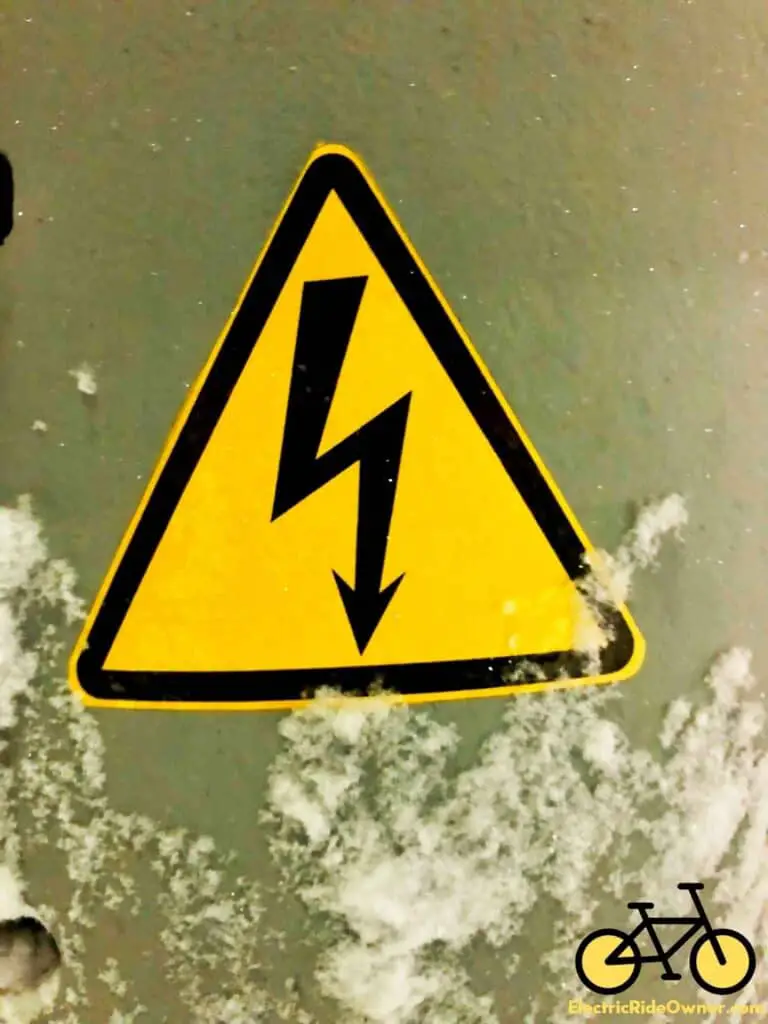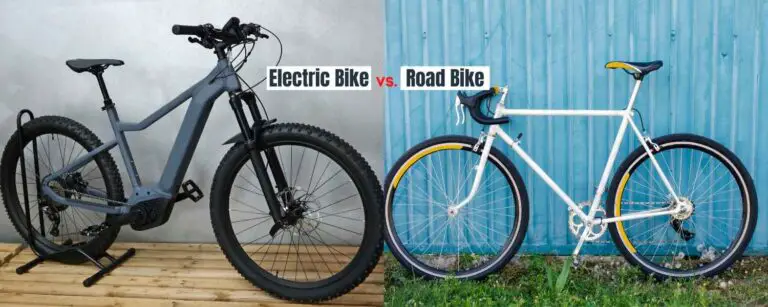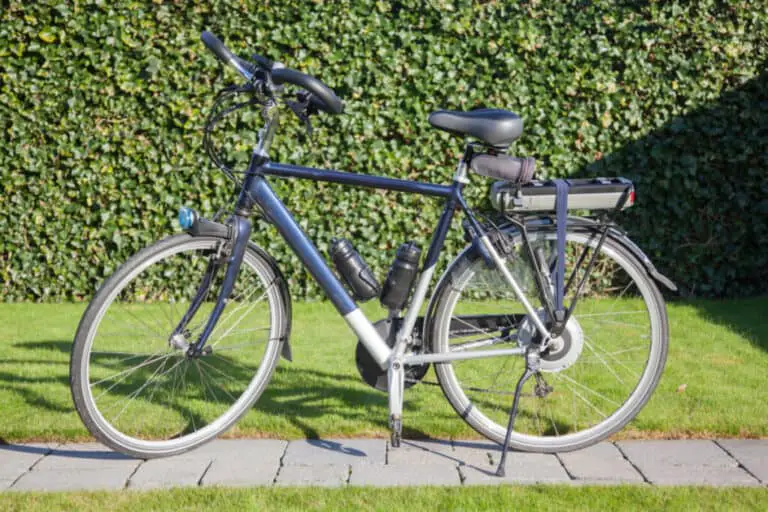Charging eBike on the Go (Car Battery, Inverter, Power Bank, Solar)
Most Ebikes can last 50 or more miles per charge, but it’s a good idea to know when and where you can charge the electric bike battery. The good news is that there are plenty of options, letting you choose the most efficient way to charge your eBike. So how can we charge an electric bike on the go?
In total, when charging an eBike on the go, you can use a car battery with a 12V socket in the car. You can also use a 1000-watt inverter hooked up to a solar panel or battery bank to charge the eBike’s battery. Ebikes usually use a 15-amp controller that draws 36 volts for a total of 540W per hour.
Throughout this article, we’ll talk about where you can charge an eBike, what inverter you should use, and how much voltage you need to charge it reliably. Enjoy!
Can You Charge An Electric Bike From A Car?
As a general rule, you can charge an electric bike from a car by plugging the eBike’s battery into a 12V socket in the vehicle. Most eBike batteries are removable, so set it in the car, turn on the ignition, and plug the battery into the socket (cigarette lighter socket) for a few hours.
Most eBikes have a 12V DC charger, which means you can plug it into almost anything with a compatible receiver. If your car doesn’t have a 12V DC outlet, you can hire a mechanic to wire one to the battery.
We recommend charging the battery while you drive the vehicle. The trickle can drain your car’s battery if the engine is not powering it.
Can I Charge My Ebike With An Inverter?
As a whole, you can charge an eBike with an inverter by plugging the inverter into a car, wall outlet, solar panel, or another electrical setup. Hook the eBike’s battery into the inverter, ensuring it’s capable of 1000W to power the vast majority of bike batteries.
You can also hook an inverter to a battery bank to charge the eBike.
The Giandel 1200W Inverter is perfect for almost any eBike because it provides more than enough power. It uses a pure sine wave and comes with multiple outlets to charge various devices. Hook it to a car, solar charge controller, or battery bank for the best results.
What Size Inverter Do I Need To Charge An Ebike Battery?
As a general rule, you need a 1000W inverter to charge an eBike battery. However, some eBike batteries are slightly bigger, so it’s essential that you check the battery’s wattage and get an inverter with a higher capacity to accommodate electrical surges.
The best way to know what size inverter your eBike battery needs is to check its wattage consumption. Getting an inverter that’s below the wattage won’t provide enough power to charge it, so bigger is always better.
Another reason you should get a larger inverter than necessary is that you never know if you’ll upgrade the eBike’s battery. So why get a new inverter every time when you can have one that always gets the job done?
You Are One Charge Away From A New Adventure
-Steve
Can A Power Bank Charge An Electric Bike?
In total, a power bank can charge an electric bike if the current is larger than the eBike battery’s wattage pull. For example, if the battery requires 750W, you can use a 1000W power bank. On the other hand, if the battery needs 1000W, it’s best to choose something a little higher, such as 1500W.
Keep these tips in mind when using a power bank:
- Check how much power reserve is left in the battery bank before using it.
- Most battery banks lose their charge, so you should recharge them before heading out on a road trip.
- You can charge power banks with multiple devices, including your car, a power outlet, or solar panels.
- Ensure the power bank is fully charged since they naturally deplete over time.

Can You Charge An Ebike Battery With Solar?
As a whole, you can charge an eBike battery with solar power by plugging the solar panels into a charge controller or power bank. Once the bank is full or the solar power is funneling electricity to the controller, plug the battery into either of them for a reliable current.
Solar battery banks are more reliable, but a solar panel without a bank can be used on a sunny day.
Here are three things you should know:
- Suppose you use a direct charge from solar panels without a battery bank. In that case, the wattage needs to be as high as the eBike battery’s wattage (which is quite rare for portable panels).
- Solar generators are often the best choice because they can be charged by the sun or a power outlet for supplemental energy.
- You can mount solar panels to the roof of your vehicle to charge a spare battery bank for the eBike’s battery.
Check out this 12V portable solar panel kit on Amazon, which you can use to charge your e-bike on the go.
How Many Amps Does An Electric Bike Draw?
As a general rule, an electric bike typically draws 15 amps, so it’s crucial to have a battery bank or inverter that meets these needs. Multiply the amps by the volts to get the watts, so you know what size inverter, battery bank, generator, or wall outlet you need to charge the bike’s battery.
That being said, we highly recommend checking your eBike’s battery to know how many amps it draws. Unfortunately, all batteries can be different, so there’s no definitive answer.
What Voltage Are Most Electric Bikes?
As a whole, most electric bikes are 36 volts since it helps them last longer and provide more power to the pedals. The higher the volts, the longer the biker will last and the easier it’ll be to control.
However, keep in mind that high-voltage eBikes usually take longer to charge, which is worth considering if you don’t have a reliable charging station.
According to Ebike School, some eBike batteries go as low as 24 volts. But, of course, it all depends on how much power you need and how long you can wait to charge it. Ebike batteries can charge overnight, too.

What Kind Of Battery Is Used In E-Bike?
As a general rule, E-bikes use lithium-ion batteries because they last longer per charge. They can be cycled up to 1,000 times or more. They don’t off-gas like many other batteries. Furthermore, lithium-ion batteries allow for more battery life and power.
There are high-quality Li-ion batteries and low-quality variants. Check the reviews before purchasing a new battery to find its watts, amps, volts, and remaining life cycles.
We actually wrote a full article breaking the costs, pros, and cons of most of the major batteries on the market today. I wouldn’t even be thinking about buying a battery without checking out our article first. You can access our article Electric Bike Battery Cost (A Helpful Chart by clicking here.
What Is The Difference Between A Car Battery And A Bike Battery?
In total, the difference between a car battery and a bike battery is that car batteries are usually deep-cycle batteries that charge from an alternator through the engine. In contrast, bike batteries can’t charge while the bike is running.
So instead, a lithium bike battery is removed, charged, and depleted as it’s used.
Lithium-ion batteries also tend to be much more lightweight than deep-cycle batteries. They’re not filled with liquid, nor are they strapped to alligator clips.
Fortunately, li-ion batteries don’t require a constantly charging source like a car battery. Instead, they’re consumed as you pedal and charge at a station.
Can You Use a Car Battery For an Electric Bike?
As a general rule, you can’t use a car battery for an electric bike. A car battery is a 12-volt deep-cycle battery that’s too heavy, bulky, and doesn’t have the adequate engine components to charge itself on an eBike. So instead, e-bikes need a removable, rechargeable 24v to 48v Li-ion battery.

How Do You Charge An Electric Bike Battery Off The Grid?
In total, to charge an electric battery off the grid, use a solar-powered battery bank or a generator. You can choose a solar generator or a gas-powered generator. Then, plug the eBike’s battery into the battery bank or generator until it’s fully charged.
Whether you choose solar generators, panels, gas-powered generators, or anything in between, it’s important to remember your primary choices revolve around gasoline or sunlight. Off-grid locations usually don’t have power outlets, but there are more than enough alternative methods.
Try this helpful video tutorial by Sam’s Bikes for more suggestions:







